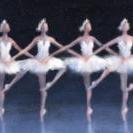Leaderboard
Popular Content
Showing content with the highest reputation on 08/03/2024 in all areas
-
Made this. PDF's are self explanatory. enjoy! Please tell me if notation is any good or if its bad. The untitled document is the info page for the score. the other pdf is the title page. 01 Winter's Passing - Ballet in One Act, Op. 1_ I. Overture.mp3 Winters Passing, I. Overture.pdfUntitled document.pdfWinter’s Passing (dragged).pdf1 point
-
hi, I've been working on a simple jazzy tune. Looking for feedback and tips on how to end this piece. I am so close to finishing but can't find the right ending as usual... 🙂 I am thinking to repeat the beginning melody with a slight variation and hopefully land on an ending I like? Thanks in advance!1 point
-
You have two players for instruments, so each instrument can take turn to have a quaver’s rest for breath without having too much effect on the volume. For example flute 1 can have a quaver rest on the 6th quaver and the flute 2 have quaver rest on 2nd rest. For the harp you need to list out the 7 pedals used and which positions they are on: sharp, natural or flat, and indicate the change of the pedal whenever it’s needed. Like the above B natural in b.11 can be played by a B natural pedal or a Cb pedal, but either Bb Cb pedal or B natural C natural pedal can coexist, but not Bb B natural and C as in b.10-13 so you will have to indicate the change of pedals. Henry1 point
-
Yeah it!s better to write with trials and errors with problems than not writing anything at all. All of us faces the problems when writing, but only through error we can learn to write better music. But sometimes you have to know how to write properly before experimentation. Like Beethoven he wrote more ordinary sonatas before trying experimentation.1 point
-
Hi @Gabriel Carlisle, I love the aura of the piece! It really feels joyful and fit for a ballet for me. I love the melody, it’s simple and elegant. Will the viola keep playing double stops or there will be a divisi? I am not sure if the winds can play through b.9-16 without some place to breathe given the tempo of the piece. Wind players will be more familiar with the issue. When the B naturals are all resolved to Bb they should be marked as Cb. I think wind players should have the opportunity to play the melody as well! I am not sure from b.21 to 35 the violins should have the staccatissimo marked in a quick semiquaver. Thx for sharing! Henry1 point
-
Hello @PeterthePapercomPoser, Thank you so much for your thoughtful feedback. My composition could use a change of pace when the bunnies cranked up their energy. I was likely too caught up with expressing their innocence and playful side. I like your suggested way of composing the piece; it sounds like a great idea. Regarding "The Tortoise and the Hare" composition, it does sound interesting. I'll check it out. Thank you again for your thoughts! ~Frank1 point
-
Thank you for listening and for your advices @Luis Hernández and @Henry Ng Tsz Kiu! I know the subject is really inconvenient for a proper fugue. Specially because of the jump from B to F, the strange flow caused in m.3 because of that jump, and the anacrusis beginning in the G (dominant) moving to a C right after that. Since both made it hard to write a proper real and tonal answer: if the beginning was in G I could have written a proper real answer with the Dominant harmony in the first measure. And the fact that G moved to C at the beginning rendered a tonal answer boring, since the G would have to be changed to a C in the first bar so the melody would have been something like C-C-Bb. Also I realized the tritone jump was weird. However I kind of found the effect funny and a mixture of seriousness and ridicule, somehow (I particularly like that jump in a legato melodic instrument). So I just kept the subject and decided to experiment with this piece to do many things that should not be done, such as having that tritone leap, a real answers starting in non-tonic harmonies and "non-serious" counterpoint. So this is more an "experimental fughetta" rather than an attempt to write a proper one. I uploaded it because it was honestly fun to do, even if I know the final result is not particularly appealing 🤣. Thanks for listening!!1 point
-
hi @PeterthePapercomPoserand @Henry Ng Tsz Kiu thank you for the kind comments!! I agree with both of you - ritardando, tonal, relaxing cafe, looping melodies are what I have in mind. I'm glad the same ideas and feelings come across! it's really nice to get feedback on this forum for improvement and a small confidence boost 🚀 I'm going to keep up with making more sketches, and pick a few of the best ones to share and develop !!1 point
-
Thank you! Nice fugue. I will be releasing a 20 minute video and hopefully I can get more challengers after the video. If not, we will just be featuring you Peter haha!1 point
-
Hi @kaiyunmusic, The music is really relaxing! For me I would just want the piece to keep simple by having existing chords used now! Maybe I will have the melody up an octave at the end would be enough for varieties! I would want the piece to keep going on and on and I imagine it will be played in a cafe or bookstore non-stop. Thx for sharing! Henry1 point
-
Hi @JorgeDavid, I agree with @Luis Hernández with the tritone B-F jump that is a bit off. Also as Luis said, the theme really should ends in an instead going up to G. If you wanna write tonal answer, the first note of the answer will be a C instead of a D. In history tonal answer is the default and more commonly used since it provides smoother flow and transition from modulations from tonic to dominant. I think for the episode in b.7 is somewhat bare without a third. I think you can make use of the head of the subject (that anapest rhythm) to include some thirds in it. I like the canon in b.16. For the ending, I think you can keep using the head motive as in b.16! Thx for sharing. Henry1 point
-
Hi @kaiyunmusic! I really like this piece! And I think it might just be one of your longer ones? Which means that you must be progressing and getting better and more able to develop your pieces further! I think there's no problem with ending a piece with a fade-out like you've done here. You should also think about whether you want to end your piece on the home (or tonic) chord or if you want to wander into some alien sonority (which I sometimes like to do). I think a ritardando at the end can make even the most outlandish and unusual harmonies sound conclusive (if you slow down at the end). Thanks for sharing!1 point
-
Hello Composing a leak, no matter how small, is no small feat. Especially if we start to do without knowing well. By ear it will not come out for sure. You see, whether the response to the subject is tonal or real, is not a choice. There are certain things that condition one or the other, so that it works. To write a real answer (with all the intervals exactly the same in the subject and in the counter-subject), the subject must start on the tonic and end on the tonic (C, in this case). When the subject has the dominant note (G) preponderant, either because it appears at the beginning or because it appears by leap, the answer has to be tonal. And tonal means that sometimes the intervals have to be changed to bring the notes back to the tonic. Anyway, this is long to explain here, but that's the way it is, otherwise it doesn't work well. On the other hand, the subject has a very irregular thing in the melody design. In measure 2 there is a melodic scale that ends in the sensitive (G-A-B-E).... This should resolve to C. But even stranger is that it jumps from B natural to F natural (tritone jump, in strong position).1 point
-
@Henry Ng Tsz Kiu You can try importing, I worked on Quantization last weekend, it will probably will work. Just trim it down to the minute you'd like to submit since Music Jotter may not be capable of handling massive scores just yet.0 points


.thumb.png.8b5b433a341551e913a34392660bc95b.png)



